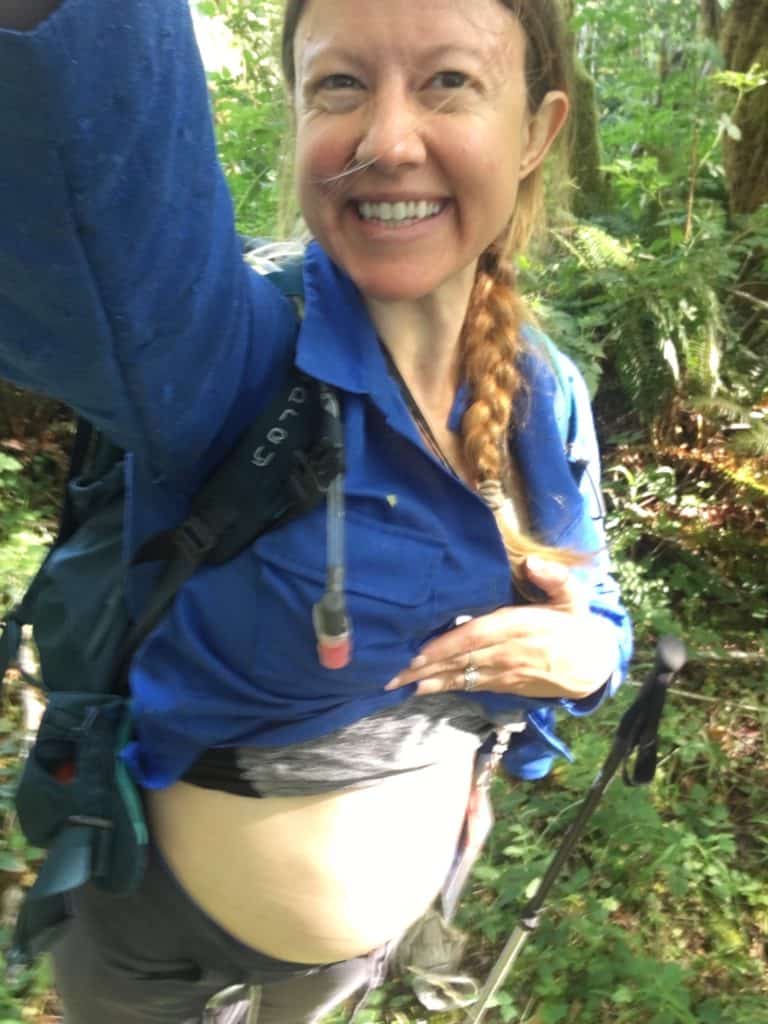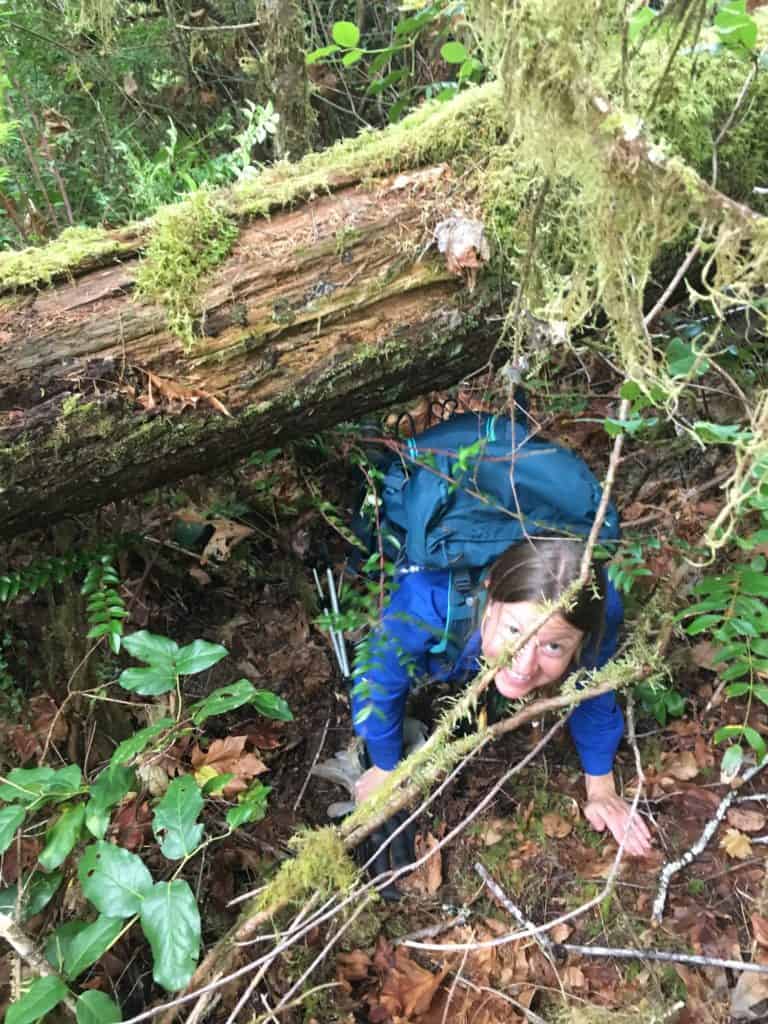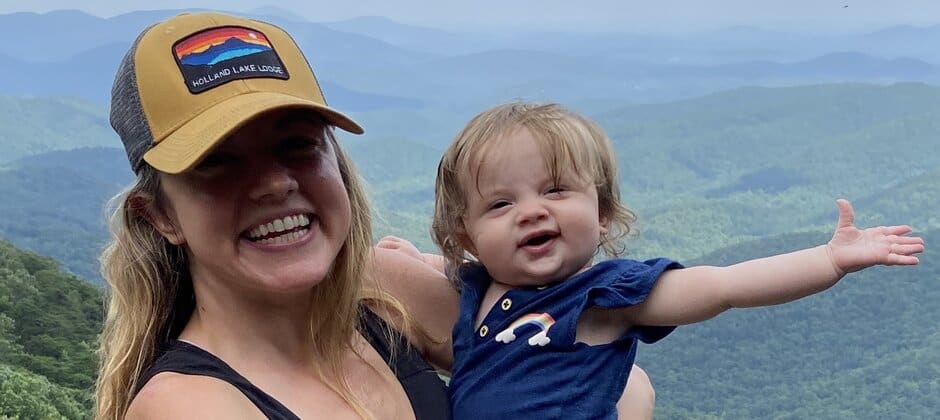Share this article
Wildlife Vocalizations: Lauren Polansky
Wildlife Vocalizations is a collection of short personal perspectives from people in the field of wildlife sciences.
Bold wildlife biologists know that rigor is made better by community inclusiveness. They inspire me because they are not afraid of complexity. In 2017, while protesting the Dakota Access Pipeline’s violent dismissal of the Fort Laramie Treaty and the Standing Rock Sioux’s right to protect their cultural and sacred sites, I felt a resounding call back to wildlife restoration. In my 10th year as a public health scientist with the Centers for Disease Control and Prevention, with a decades-old zoology degree and rusty wildlife monitoring fieldwork from Equatorial Guinea, I sought to work with tribal, indigenous, and community leadership to monitor and restore wildlife only to find my combination of experiences didn’t fit neatly in anyone’s box.

Me on one of my final retrievals of ARUs and camera traps. Set up to record six weeks of data, this is a non-invasive method to assess the demography and ecology of northern spotted owls (Strix occidentalis caurina) and other key species. This study is being conducted in the Pacific Northwest coastal range by the U.S. Forest Service in conjunction with Dr. Damon Lesmeister’s Bioacoustic Laboratory at Oregon State University. Credit: Lauren Polansky
As an enrolled member of the Lenape Nation (Delaware Tribe of Indians), represented by the wolf, turkey, and turtle clans, it is my dream to help protect these species and their many relatives. In 2018, I joined The Wildlife Society and earned my Master Naturalist certification from University of Georgia Extension Services. In 2019, I enrolled in the online Masters of Legal Studies in Indigenous Rights at the University of Oklahoma School of Law and was awarded The Wildlife Society’s Native American Research Assistantship (NARA). NARA assigned me to the Siuslaw National Forest in Oregon, where non-invasive, bioacoustics efforts to assess the northern spotted owl population were ongoing.
Shortly after committing, I received the exciting news I was pregnant. No one warned me of the field conditions. It was jarring to be tangled up in gnarly tree decay, constantly freeing myself from the dense, piercing vines. As my feet sunk into the loose soil, I scrambled across steep slopes to randomly generated GIS points. My pack held extra food and water. My body held back morning sickness on the winding logging roads. My mind focused on my footing as strongly as if there was molten lava beneath it. My spirit simply held on.

Bioacoustic monitoring of northern spotted owls (Strix occidentalis caurina) often required crawling in order to properly install Audio Recording Units (ARUs) and camera traps in the randomly selected areas. This study is being conducted in the Pacific Northwest coastal range by the U.S. Forest Service in conjunction with Dr. Damon Lesmeister’s Bioacoustic Laboratory at Oregon State University. Credit: Stephen Wood
Alone on a ridge line one morning, I had a rare encounter with a female black bear. Holding her ground she stood on her hind legs vigorously huffing. She was not interested in my shouts or flailing hiking poles. Jarring her head she took a step forward. Facing her, I reached for my non-existent bear spray, and decided to retreat backward. She gracefully allowed. The camera trap later revealed that she was also a mother, guarding her young cub.
At 36, in career transition and my second trimester, I proved that I could complete a challenging summer field season. I came out injury free, without any loss or damage to equipment, and joked that pregnant women make the best field assistants. As I continue to build my career, our daughter Ntëmeyëm (Lenape for “my wolf”), who I nicknamed that summer in the forest, will forever remind me how important it is to embrace complexity and unpredictability before making any assumptions about what is possible.
Learn more about Wildlife Vocalizations, and read other contributions.
Submit your story for Wildlife Vocalizations or share the submission form with your peers and colleagues to encourage them to share their story.
For questions, please contact Jamila Blake.
Header Image:
Six month old Ntëmeyëm and I in the Blood Mountain Wilderness of the Chattahoochee National Forest of Georgia almost one year later.
Credit: Melissa Strain








